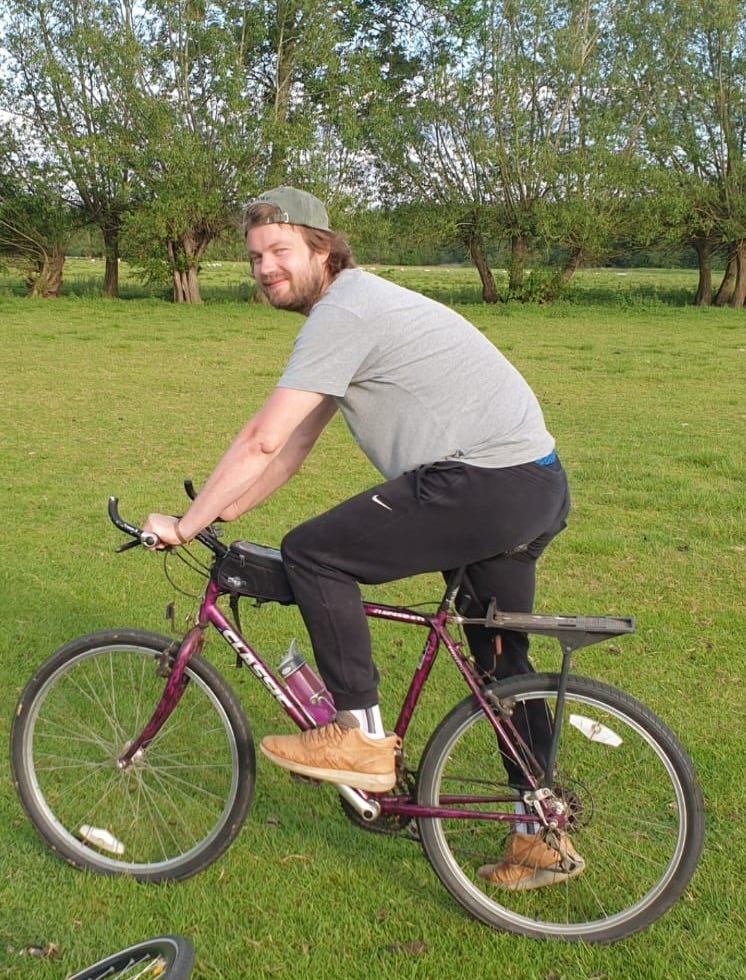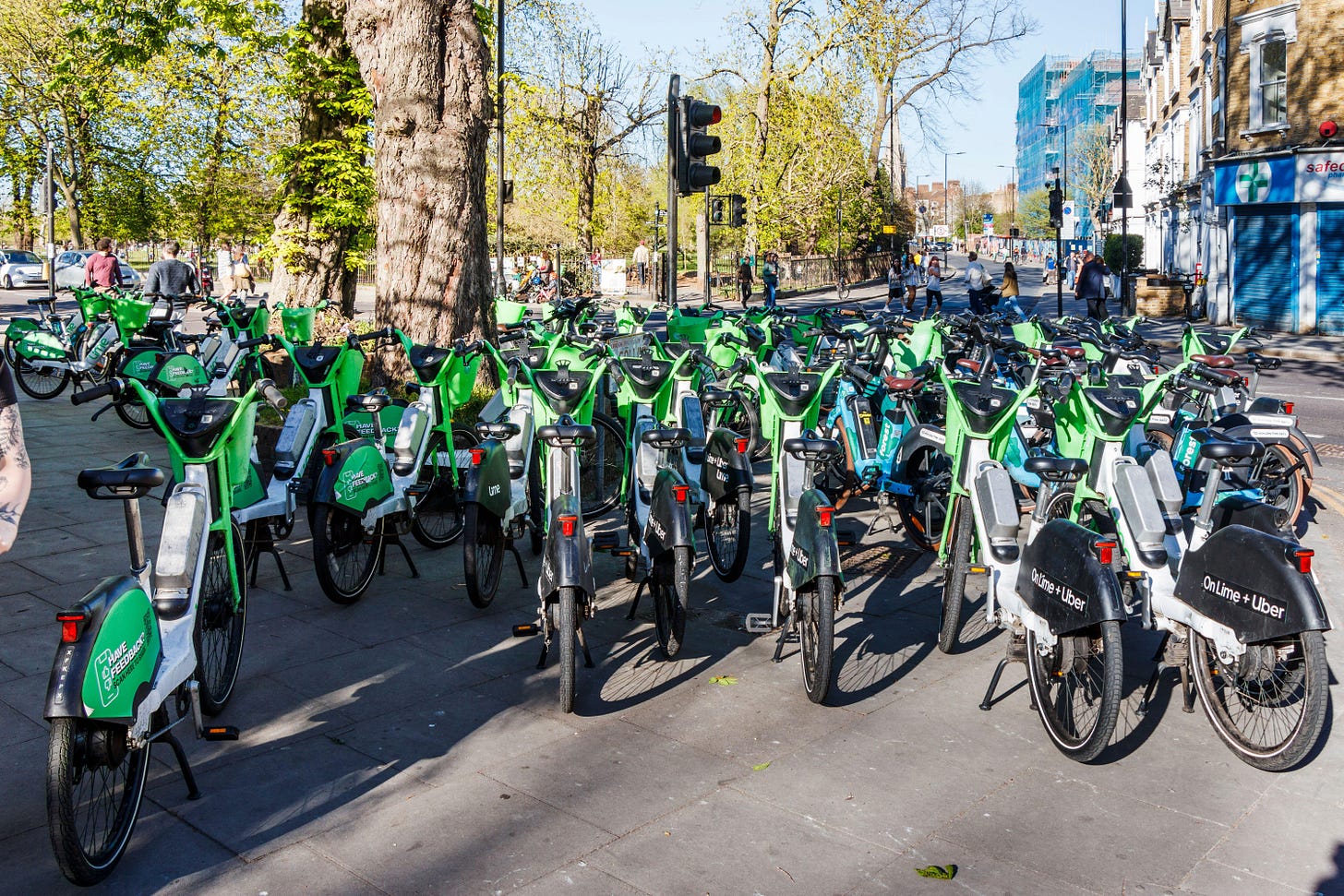"My kidney burst in a Lime bike accident"
We had suggested it was effectively impossible for e-bike riders to claim on Lime's insurance policy. This reader got in touch to argue otherwise.
Michael Williams thought his medical records had been leaked when he saw London Centric’s reporting on injuries caused by accidents involving Lime’s e-bikes in the capital.
We’d mentioned that Lime’s personal injury insurance policy requires a rider to suffer a permanent disability such as the “complete loss of one kidney” before paying damages to customers involved in an accident. We’d argued it was hard to imagine a situation in which anyone could lose a kidney while riding a Lime bike, so the policy wasn’t much use.
This confused Williams, who decided to get in touch.
“I thought somehow what had happened to me had got out to you,” he said last week, showing off his scar from where most of his kidney was removed following a Lime bike crash. “I thought you’d somehow got into the hospital records.”
If you want to get in touch with London Centric directly then message us on WhatsApp or email.
When we started reporting on the serious injuries affecting riders of Lime’s heavy e-bikes we had no idea what we were starting. Since then “Lime bike leg” has entered widespread usage as national news outlets have cottoned on to the scale of the problem. NHS doctors regularly get in touch with us to offer updates on the number of motorcycle-style shattered legs they’re seeing. Our reporting has been raised with ministers in the House of Lords.
Our inbox has also become an endless stream of gory images and videos of severe injuries caused by Lime bike accidents, often sent in by readers who feel the e-bike they hired off the street was poorly maintained or had an unsafe design.
A lot of these people have found they are not covered by Lime’s personal injury insurance policy, which only pays out for the most serious injuries, leaving many to turn to a growing number of personal injury lawyers suing the e-bike operator.
As California-headquartered Lime rushes to grow its London revenue ahead of a billion dollar stock market flotation, questions remains: Should the largely unregulated company offer a more comprehensive insurance package to protect its paying customers — and what’s the cost to the NHS for picking up the pieces when people are injured?
When Williams crashed his Lime bike in March, the 34-year-old social care training provider thought he’d had a lucky escape.
He’d just got the tube from his home in Southgate to Clapham Common, from where he was heading to a friend’s house for a roast dinner. It was late afternoon and the experienced cyclist decided to save himself a 30-minute walk by grabbing a Lime bike and cycling along a side road.
At this point a cat darted into the road, causing him to swerve and crash. He doesn’t suggest there was anything Lime could have done about this. In any case, cycling accidents will always happen and injuries caused by cars in the capital are far more numerous.
But Williams is an experienced cyclist, and his own assessment is that Lime’s bikes contributed to the severity of the accident in two ways.
First, the weight of the Lime e-bike he was riding on, which comes in at 39kg, left him losing control when he swerved and harder to jump free. Looking back he believes he may have pushed down on a pedal and enacted the Lime bike’s powerful electrical assist, inadvertently speeding himself up on an already unstable bike.
Second, he had the bad luck of swerving straight into two other Lime bikes parked on the side of the road. In the process he landed on his side with the weight of his own Lime bike pushing him down onto the parked Lime bikes. He’d become the filling in a hire bike sandwich, with a pedal pushing against his torso.
At first Williams thought he’d escaped with just a small scratch. But then he stood up in indescribable pain.
“I was mooing like a cow,” he said, remembering how he became quickly drenched in sweat. “I thought I’d broken some ribs. Then I started losing my eyesight, started losing consciousness. Just couldn't really breathe. I couldn’t sit down. I didn't know what the hell was going on, so I called an ambulance.”
Having explained he had been in a Lime bike accident, the 999 operator refused to send help because there was no external bleeding, open wounds, or bones sticking out: “I was like, ‘I don't know what's going on, but I can barely breathe and I'm losing consciousness,’ but they still said that I was going to have to call 111 or try and find my own way to A&E.”
In a moment of dark humour, at this point a stranger turned up and started trying to hire one of the Lime e-bikes that Williams had just crashed into. “I'm just rolling around on the floor and rather than helping, he's seen that the Lime bikes are there, he's picked one of them up and tried to get it going.”
One of Williams’ biggest fears was the risk of being left with a massive fine because he hadn’t ended the ride with a photo showing his own Lime bike had been parked correctly. Eventually he managed to get a friend to come and rescue him with a car: “Even though I'm there bleeding to death internally the first thing I said to him was: ‘Can you just clock off my bike for me?’”
When Williams turned up at St George’s Hospital in Tooting, the staff rushed him to the front of the A&E queue, straight into an MRI scanner, then into surgery: “Pretty quickly they realised I'd burst my kidney, was haemorrhaging, had damaged my spleen and broken four ribs.”
The doctors said they were used to dealing with Lime bike injuries but this was new, he explained: “NHS doctors and nurses understandably hate Lime bikes. But said it's almost always face, heads, or legs, or arms and elbows. They kept asking about a car and if I'd hit a car, and they kept asking about a kerb and if I'd hit any kerb. But I hadn't, because it was on the road and I was nowhere near any vehicles.”
After a week in hospital it was clear that the kidney couldn’t be recovered and Williams was booked in for a full removal. He signed paperwork acknowledging the risk of death and went into the operating theatre. The one potential positive, although he didn’t know it at the time, was that Williams would undoubtedly have qualified for Lime’s full payout under its personal accident insurance policy for “complete loss of one kidney” — one of the few people likely to do so.
When he woke up, Williams instead found two things. First, there was a tray containing a four inch by one inch “burnt bit of fatty steak”. This he was informed, was a chunk of his kidney.
Secondly, there was a “very proud” doctor who had delayed going off on holiday to tell Williams in detail how the team had, against the odds, managed to save around 30-40% of his organ.
Williams filed an insurance claim with Lime last month but was unsure whether the doctors’ success in saving part of his kidney would rule him out.
When London Centric approached Lime’s press office on Thursday to ask whether he would still qualify for a payout, things began to move faster. Suddenly the insurers got in touch and made a financial offer to settle the claim.
“We are saddened to hear about this regrettable incident and our thoughts are with Mr. Williams as he recovers,” said a Lime spokesperson, who said more than 99.9% of rides end without any issues and their bike are maintained to all required standards.
“Lime provides public liability insurance in line with our contractual obligations. Additionally, Lime provides personal accident insurance purchased on behalf of riders at no additional cost to them. This goes above and beyond our contractual requirements, and aligns with, or exceeds, other shared micromobility operators. We can confirm Mr. Williams’ injuries are eligible to be covered under the personal accident insurance policy.”
London Centric’s investigative reporting is made possible by our paying subscribers — thank you to all of them.
Lime e-bikes have been transformative for getting millions of Londoners cycling and opened up neighbourhoods of the city that were previously inaccessible. They’re a major new form of transport that have become part of the capital’s life, beeps and all. But the internal operations and standards of the Uber-backed Californian company has received less scrutiny.
Even the number of e-bikes Lime has on the streets of the capital is unknown, with press reports tending to just recite old figures suggesting there are around 50,000 vehicles. The company itself won’t provide an updated number and the bikes remain largely unregulated, although the government is proposing to change this and hand control of them to Transport for London.
Williams acknowledges his accident was a freak incident and doesn’t blame poor maintenance of the bikes for his crash, unlike many of the people we have talked to in the past.
At the same time he feels there needs to be a reappraisal of Lime’s heavy e-bikes from a safety perspective: “If you saw my crash it was pathetically slow. If I was just on my [personal] bike and it happened then I would have still swerved — but I would have been on a bike that weighs a fifth of the weight and it's just a bit easier to get off.”
In other European countries Lime has begun testing a new bike design which, according to readers who have tried them this summer, offers a lower centre of gravity making it more stable than the version used in London. The company denied the new design was due to safety concerns.
Williams said he backed any design changes that would lead to London’s e-bikes becoming light, more stable and “less kidney-bursting”.
He also said there’s a wider point about Londoners not being aware about the existing lack of oversight of Lime’s operations: “It is odd that there’s this big company from a completely different country, just filling our streets with these devices that we don't know what to do with, don't really know how to use, or how to regulate.”
“If it keeps making money they’re going to keep flooding the market with these bikes. They’re going to cause more accidents with little to no regulation as it stands.”
If you want to get in touch with London Centric directly then message us on WhatsApp or email.











I'm horrified (though I suppose no longer surprised) by the fact that the emergency services staff member who triaged the initial call for help didn't recognise the *massive* red flags present. An abdominal or thoracic compression/impingement injury, combined with the severe pain, the sudden profuse sweating, breathing difficulties, the dimming and loss of sight, the (feeling of) losing consciousness. Michael is lucky that the internal bleeding caused by the injury didn't kill him on the (needlessly prolonged) journey to hospital.
I rode on a new model Lime bike in Nice a few weeks ago. It was MUCH better. 20inch wheels, lower centre of gravity, smaller and lighter, better capacity basket and much better designed phone holder too. Much less likely to result in serious injury. I really hope they are phased in here! (Also, speaking as a barrister specialising in negligence, please tell your readers to check their home insurance policies, which may assist in some personal injury claims!)